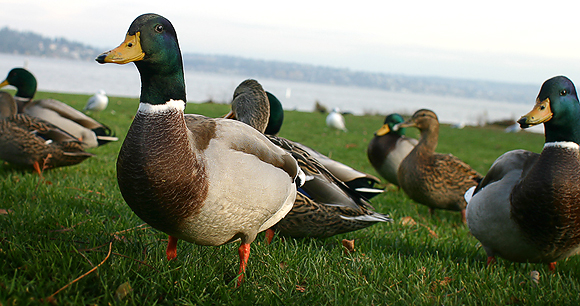
Birds
The diversity of birds throughout the world is simply astounding. From the tiniest hummingbird to the prehistoric-looking California condor, from seabirds to songbirds and ducks; bird are globally ubiquitous. It is not surprising that birds fascinate us and that bird watching is particularly popular among citizens worldwide.
While some bird species are protected, many are not. In Africa and South and Central America, many birds, including parrots, parakeets, and colorful songbirds, are heavily exploited for the pet trade. In the US, ducks, seabirds, and upland game birds (e.g., doves, pheasants, wild turkey, quail) are killed by the millions annually for sport. In addition, millions of so-called nuisance birds (e.g., starlings, blackbirds) are killed annually by federal and state agencies to address alleged conflicts with farmers and/or to ostensibly protect public safety.
Though international and domestic laws have been adopted by many countries to control or prohibit the import of exotic birds for the pet trade, illegal trade in birds and their parts continues. With high levels of both legal and illegal trade and the significant mortality inherent to this trade, as well as many other threats to birds and their habitats, many bird species are in decline.
In the US, the Migratory Bird Treaty Act provides protections for the majority of bird species, yet hunting and lethal control continue to be employed as management strategies to provide for recreation and/or to address damage incidents—including at airports, where birds have been undeservedly characterized as a major threat to aviation safety. Non-lethal control strategies including reproduction control methods, chemical repellents, and other techniques are available to address many human/bird conflicts.
Other Animals
Other terrestrial animals exploited by humans include (but are not limited to) small mammals (e.g., rabbits, squirrels, mice, rats), reptiles, and amphibians. Small mammals throughout the world are subject to lethal exploitation for sport, food (e.g., bushmeat), and trade in pelts or meat. Millions of reptiles and amphibians are captured from the wild annually for the pet trade, to be sold live for food, or are captured and killed for skins or meat.
While some small mammals, reptiles, or amphibians are protected by national or international laws, the vast majority are not. Exploitation of most species, particularly of reptiles and amphibians, is done with virtually no understanding of the status of the populations, impacts of the killing or capture on the populations, or of the ecological impacts.
Turtle populations throughout the world are under severe threat due to their consumption, largely in Asia, as food which, with the severe depletion of Asian wild turtles, now threatens turtle populations elsewhere, including North America. Reptiles, including snakes and lizards, captured for the skin trade are subject to massive cruelty and suffering as their skins are peeled from their bodies—often while still alive—to be manufactured into garments, belts, purses, shoes, wallets, or watchbands.